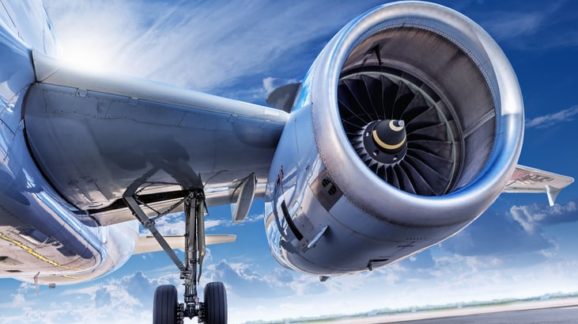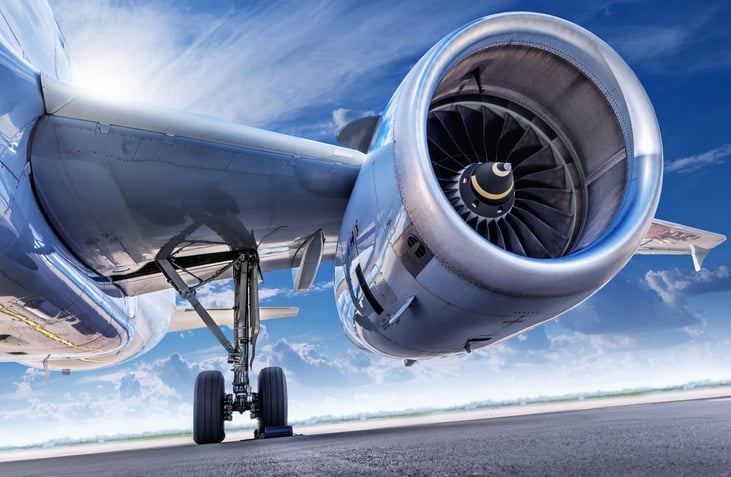EPA Proposes First Ever CO2 Standards for Commercial Aircraft

Photo Credit: Getty
 The Environmental Protection Agency (EPA) today proposed first-ever greenhouse gas (GHG) emission standards for certain new commercial airplanes, including all large passenger jets. The proposed standards, which phase in during 2023-2028, “match the international airplane carbon dioxide (CO2) standards adopted by the International Civil Aviation Organization (ICAO) in 2017,” EPA explains.
The Environmental Protection Agency (EPA) today proposed first-ever greenhouse gas (GHG) emission standards for certain new commercial airplanes, including all large passenger jets. The proposed standards, which phase in during 2023-2028, “match the international airplane carbon dioxide (CO2) standards adopted by the International Civil Aviation Organization (ICAO) in 2017,” EPA explains.
Yes, you read that correctly, the Trump administration plans to be the first in U.S. history to regulate CO2 emissions from American-made aircraft. What’s going on here?
Although a climate policy rule in form, the rule aims to ensure U.S. aircraft manufacturers are not shut out of foreign markets by the other 192 ICAO member governments. The United States is the world leading aircraft manufacturer, and President Trump wants to keep it that way. U.S. aircraft companies export three out of every four planes they build. “This proposed action, if finalized, would … maintain the worldwide acceptance of U.S. manufactured airplanes and airplane engines,” EPA states.
The proposed rule provides more detail:
These proposed standards would allow U.S. manufacturers of covered airplanes to remain competitive in the global marketplace. In the absence of U.S. standards for implementing the ICAO Airplane CO2 Emission Standards, U.S. civil airplane manufacturers could be forced to seek CO2 emissions certification from an aviation certification authority of another country (not the Federal Aviation Administration (FAA)) in order to market and operate their airplanes internationally. U.S. manufacturers would be presumed to be at a significant disadvantage if the U.S. fails to adopt standards that are at least as stringent as the ICAO standards for CO2 emissions. The ICAO Airplane CO2 Emission Standards have been adopted by other ICAO member states that certify airplanes. The action to adopt in the U.S. GHG standards that match the ICAO Airplane CO2 Emission Standards will help ensure international consistency and acceptance of U.S. manufactured airplanes worldwide (p. 8).
Because aircraft CO2 emissions are directly proportional to fuel consumption, the ICAO standards are essentially a fuel-efficiency metric.
Won’t this make U.S.-built aircraft more costly, in turn making it more expensive for people to fly? The EPA does not think so. According to the agency, the rule will impose no costs on the U.S. aircraft industry (except for limited reporting expenses) because the ICAO standards are based on “existing or expected fuel efficiency technologies from airplane and engine manufacturers.” All aircraft in ICAO’s “growth and replacement” database “either will meet the standard level associated with the proposed GHG standards or are expected to be out of production by the time the standards take effect” (pp. 91-92).
So, if IACO standards reflect rather than drive market trends, what’s the point of regulating? Again, for the EPA, the trade angle seems to be paramount. In addition, the rule enables the agency to meet regulatory obligations ginned up by the Obama administration:
In August 2016, the EPA issued two findings regarding GHG emissions from aircraft engines (the 2016 Findings). First, the EPA found that elevated concentrations of GHGs in the atmosphere endanger the public health and welfare of current and future generations within the meaning of section 231(a)(2)(A) of the Clean Air Act (CAA). Second, EPA found that emissions of GHGs from certain classes of engines used in certain aircraft are contributing to the air pollution that endangers public health and welfare under CAA section 231(a)(2)(A). … As a result of the 2016 Findings, CAA sections 231(a)(2)(A) and (3) obligate the EPA to propose and adopt, respectively, GHG standards for these covered aircraft engines (p. 9).
To cancel that obligation, the EPA would have to overturn the December 2009 GHG endangerment finding that underpins all of the agency’s greenhouse gas regulations. That is a heavy lift, and the Trump administration has not pursued it.
The EPA likely concluded it is better to set non-onerous standards than allow contentious litigation or a possible future Biden administration to decide the outcome.
As expected, environmental groups denounce the EPA’s proposal as too lenient and “well below business as usual.” But what good would more stringent standards do? Competition drives airlines to demand and manufacturers to build more fuel-efficient aircraft. “Between 1960 and 2014, the average fuel burn of new aircraft fell approximately 45 percent, or a compound annual reduction rate of 1.3 percent,” according to the International Council on Clean Transportation.
The global aviation industry accounts for about 2.5 percent of all anthropogenic CO2 emissions, with U.S. aviation accounting for about 0.6 percent of total emissions. Tougher standards for U.S.-built planes would have no discernible impact on climate change effects for many decades, if ever. In contrast, increasing airline technology costs could make air travel even less affordable to the more than 80 percent of humanity who have never taken a flight.
In his new book, False Alarm: How Climate Change Panic Costs Us Trillions, Hurts the Poor, and Fails to Fix the Planet, Bjorn Lomborg offers a withering critique of flight shaming. “Flights,” he observes, “are not only for leisure; they allow the flow of expertise and labor, let us solve medical emergencies, provide disaster relief, help us to learn about other cultures, and connect us with loved ones.”
Lomborg goes on to explain why shunning air travel is not a “climate solution.” From his concise explanation we may also infer why the tougher CO2 standards demanded by environmental groups are climatically irrelevant:
Even if every single one of the 4.5 billion [passengers] getting on any flight this year stayed on the ground, and the same happened every year until 2100, the rise in temperatures [projected by climate models] would be reduced by just 0.05°F, equivalent to delaying climate change by less than one year by 2100.